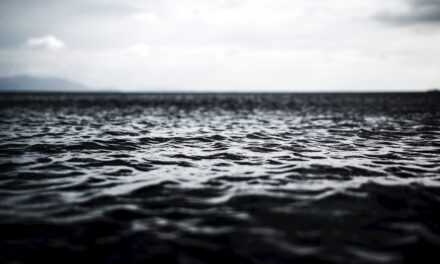In 1997, several Asian countries brought a claim before the Appellate Body of the WTO against the US. The US has banned the import of shrimp that were caught with technology that affects sea turtles. The fishers had to use the TED system, which prevents sea turtles from getting caught with the shrimp. Although countries are allowed to protect their environment under the WTO, the US lost the case because it discriminated between WTO members. [1] This case is an example where trade law regarding non-discrimination opposes a problem for animal wellbeing. While an effective legal framework regarding animal protection and welfare is lacking.
As illustrated by the US Shrimp case, international economic laws have an influence on the welfare of animals, especially as it seems that an international framework seems to be lacking. This article will discuss what the problems are in international animal welfare laws and what the influence or role of international economic law is in light of this lacuna. This will be discussed by introducing the current international animal welfare law frameworks and the problems with these frameworks. In the next paragraph, the influence of economic law and important cases will be discussed. This article ends with a conclusion about how the influence of economic laws will be determined and whether this is a positive or negative influence.
The international animal laws
What exactly is international animal law? Animal law can be described as any legal issue that involves animals. This very broad definition is a combination of statutory and case law. The nature of the animal is a very important factor. [2] Animal law includes several categories like wildlife, companion animals, animals raised for food, used for research, education and entertainment. Animal welfare is defined by Brels as: ’’a positive state of well-being for non-human animals, resulting from both the absence of suffering and the satisfaction of fundamental needs.’’ This is also called the “five freedoms’’ of the UK Animal-Welfare Council. This formula was later endorsed by the International Organization of Animal Health.
The five freedoms are:
1. Freedom from hunger and thirst.
2. Freedom from discomfort.
3. Freedom from pain, injury or disease.
4. Freedom from fear and distress.
5. Freedom to express normal behavior.
Animal welfare legislation can be seen in both national and international law. [3] Germany, Switzerland and Norway are leading with animal welfare legislation, while the US is falling behind Europe when it comes to animal welfare on farms. [4]
In international law, there is a growing consensus that animals are sentient individual beings that are more than means to human ends. [5] International animal welfare law is fragmented and doesn’t belong to any specific branch of law. It can be found in several international law branches, like environmental law, human rights law, economic law, and other branches. [6] There is no single legal framework on animal welfare. There are conventions on whaling, like the Regulation of
Whaling (ICRW) or the Convention on International Trade in Endangered Species of Wild Fauna and Flora (CITES.) Or environmental treaties that have an effect on the well-being of animals or their living environment, like the Convention on Biological Diversity (CBD). There are also treaties focused on a region, like the Antarctic Treaty System (ATS), the Convention for the Conservation of Antarctic Seals, and the Agreement on the Conservation of Polar Bears. Animal law can also be found in economic laws like the World Trade Organization (WTO), the General Agreement on Tariffs and Trade (GATT), the Agreement on the Application of Sanitary and Phytosanitary Measures (SPS), and the Agreement on Technical Barriers to Trade (TBT).
Associations like Global Animal Law (GAL) have started initiatives for international animal law like the UN Convention on Animal Health and Protection (UNCAHP). [7]
Problems with the current international animal welfare laws
There are several problems with the current international animal welfare legal framework. The laws regarding animal wellbeing don’t belong to any specific law branch. It can be found in human rights law, environmental law, and international economic law and more branches. There is no comprehensive international framework or consensus on the protection and welfare of animals. There are some frameworks that address animal welfare, but they don’t provide effective global protection regarding enforceability and comprehensiveness. [8] It is fragmented into several areas of law. Authors like Stuart Harrop also argue that animal welfare belongs in the realm of ethics instead of the law. He sees this as the reason why there is a divide in animal law between conservation and welfare provisions. Welfare provisions are rarely included in animal conservation instruments. [9]
The lack of international consensus leads to contradictory treatment of animals around the world. [10] Animal welfare is still mostly a matter of domestic law. 11 The extent in which states have provisions about animal welfare differs. An example of this is the US that has less protection than the EU states for farm animals because there is a lack of enforcement. [12]
There are also some ethical issues in international animal welfare law. There seems to be a difference in the status of domestic animals and farms of laboratory animals. Farm and laboratory animals fall out of the scope of special civil law provisions. They don’t apply to the majority of animals. [13] Another issue is that when we recognize animals as sentient beings, the killing of billions of them wouldn’t be animal welfare. [14]
All these problems illustrate that animal welfare law is a complex multi-faceted public policy which has ethical and economical dimensions. [15]
The influence of trade law on international animal law
Protection by trade law like GATT can be facilitated, but it is not the primary topic of these conventions. [16] When we recognize animal protection as an issue of international trade law, a concern is that it will be about “Trade protectionism’’ instead of animal protection.
The WTO is a legal mechanism that can conflict with animal laws. The WTO’s goal is to liberalize trade. The most important WTO principle is non-discrimination. This results in rules and treaties that try to eliminate unfair trade restrictions. Trade restrictions like the regulations to protect animals. [17]
Many advocates for animal rights see international trade law as a blockade to their goals and not a legal tool that can be used. [18]
In trade law, the Dispute Settlement Body (DSB) of the WTO plays an important part; they also make decisions in trading cases that concern the well-being of animals. The DSB only has jurisdiction in conflicts between the WTO members under a covered agreement. The DSB adopts reports of the Appellate Body, that hears appeals from reports issued by panels in disputes brought by WTO Members. [19]
There are three interesting cases that can be assessed: the US – Import Prohibition of Certain Shrimp and Shrimp Products Case, the US Measures Concerning the Importation, Marketing and Sale of Tuna and Tuna Products Case, and the EC – Measures Prohibiting the Importation and Marketing of Seal Products Case. [20]
Animal welfare in Trade case law
In the Import Prohibition of Certain Shrimp and Shrimp Products Case, the US banned shrimp that were not caught with a ‘Turtle Excluder Device’ (TED). India, Malaysia, Pakistan and Thailand initiated the proceedings. They argued that the measure was a quantitative restriction, discriminatory and most-favored-nation-treatment. They also argued that the measure couldn’t be justified under GATT. The Appellate Body found that the measure was within the scope of exceptions found in GATT, because the restriction on the trade of shrimp was put up to conserve exhaustible natural resources. The Appellate Body still found that the US had violated the general principle of free trade under the WTO treaty because of the manner in which the US dealt with the measure. It was found to be
unjustifiably discriminatory because the measures were arbitrary. There was rigidity and inflexibility in its application. [21]
The U.S. Measures Concerning the Importation, Marketing and Sale of Tuna and Tuna Products Case was initiated by Mexico. Mexico argued that the U.S. had violated WTO law with its “Dolphin-Safe” label on tuna products. This was a label used for tuna that were caught with specific fishing methods that are safer for dolphins. The measures taken by the U.S. were considered a violation of the WTO’s Technical Barriers to Trade (TBT) and an unnecessary obstacle to trade, because it was more restrictive than necessary to fulfill its objective of protecting dolphins and informing consumers. The Appellate Body found it to be an unfavorable treatment because Mexico provided the same protection and did not receive the label. Another issue was the fact that countries could only be eligible for inclusion in the program by invitation, and that the U.S. fishing methods were not safer for dolphins than others. The Appellate Body did not find an obstacle to trade. [22]
In the Seal Products Case, Canada brought a complaint joined by Norway due to an EU prohibition on the importation and placement of seal products. This Seals Regime allowed exceptions like the Inuit and indigenous communities hunt and marine resource management purposes. The Appellate Body found that the regime was necessary to protect public morals but did not meet certain requirements under the GATT, like the chapea tests.
This was considered a landmark case because it recognized that animal welfare could triumph WTO obligations. It showed that the protection of animals was taken seriously in international trade law. [23]
Conclusion
Trade law influences international animal welfare rights negatively. There is no comprehensive framework for international animal law. International animal law can be found in different fields like human rights or economical law because of that international animal law has many dimensions. There is also a contradictory treatment of animals because it is regulated differently in domestic laws. When states take domestic measures to protect animals, trade law can oppose them and influence international animal law. The legislation can be seen as an unfair restriction on trade or a violation of the non-discrimination principle. International animal law is also influenced by the DBS. Cases like the Import Prohibition of Certain Shrimp and Shrimp Products Case, the U.S. Measures Concerning the Importation, Marketing and Sale of Tuna and Tuna Products Case, and Seal Products Case show that trade law influences international animal law because in all three of these cases a violation of WTO provisions was found by the Appellate Body.
One could conclude that trade law has a negative influence on international animal rights and argue that trade law, like the WTO’s legal mechanism, forms a blockade to animal welfare goals.
Although it might seem like this when we assess the case law, all three of these cases had different reasons for being a violation of WTO provisions like, inflexibility or not meeting certain requirements under the GATT. The Appellate Body found that all the cases conformed to the general exceptions to the GATT. This shows that international trade law doesn’t have to be a blockade to international animal law because animal welfare laws that can be restrictive to some states, are not necessarily violations of trade law. This was further confirmed in the Seal Products Case because it recognized that animal welfare could triumph trade law obligations under the WTO.
The development in case law shows more of a neutral approach to international animal law, as it doesn’t prohibit any of the measures because of their nature or restrictive influence in trade between the states. Still, a negative influence can be seen, as the measures are still considered a violation based on other elements that violate WTO provisions. Even Though animal law can triumph trade law, one could question if this will be very effective because there is no international framework and the protection offered by states in domestic law can differ greatly.
The influence of trade law will only be positive by chance, as it can only facilitate protection for animals under its own provisions, which have the liberalization of trade as their objective and the protection of trade.
1 World Trade Organization, ‘’India etc versus US: ‘shrimp-turtle’’ (World Trade Organization)
2 Saba Pipia, 'Emergence of Global Animal Law as a Separate Branch of International Law' (2020) 16 Animal & Nat Resource L Rev 171, p.171.
3 Ibid.p.172.
4 Mansi Gupta, 'International Laws for the Protection of Animal Rights and Welfare' (2021) 4 Int'l JL Mgmt & Human 1132, p.1141.
5 Saba Pipia, 'Emergence of Global Animal Law as a Separate Branch of International Law' (2020) 16 Animal & Nat Resource L Rev 171, p.173,
6 Iryna Korobko, 'International Animal Welfare Law in the System of International Law' (2016) 2016 Ukr J Int'l L 37, p.44.
7 Global animal law, ‘’UN CONVENTION ON ANIMAL HEALTH AND PROTECTION’’ (Global animal law)
8 Mansi Gupta, 'International Laws for the Protection of Animal Rights and Welfare' (2021) 4 Int'l JL Mgmt & Human 1132, p.1132
9 Stuart Harrop, 'Climate Change, Conservation and the Place for Wild Animal Welfare in International Law' (2011) 23 J Envtl L 441, p.442.
10 Mansi Gupta, 'International Laws for the Protection of Animal Rights and Welfare' (2021) 4 Int'l JL Mgmt & Human 1132, p.1132.
11 Katie Sykes, 'Globalization and the Animal Turn: How International Trade Law Contributes to Global Norms of Animal Protection' (2016) 5 TEL 55, p.56.
12 Mansi Gupta, 'International Laws for the Protection of Animal Rights and Welfare' (2021) 4 Int'l JL Mgmt & Human 1132, p.1133.
13 Margot Michel, ‘’Moving Away from Thinghood in Law. Animals as a New Legal Category’’ (2023) LEOH 29, under 2.
14 Saba Pipia, 'Emergence of Global Animal Law as a Separate Branch of International Law' (2020) 16 Animal & Nat Resource L Rev 171, p.171.
15 Mansi Gupta, 'International Laws for the Protection of Animal Rights and Welfare' (2021) 4 Int'l JL Mgmt & Human 1132, p.1140.
16 Charlotte E. Blattner, 'Global Animal Law: Hope beyond Illusion: The Potential and Potential Limits of International Law in Regulating Animal Matters' (2015) 3 Mid-Atlantic J on L & Pub Pol'y 10, p.51.
17 Charlotte E. Blattner, 'Animal Welfare and International Trade Law: The Impact of the WTO Seal Case' (2021) 59 Can YB Int'l L 623.
18 Katie Sykes, 'Globalization and the Animal Turn: How International Trade Law Contributes to Global Norms of Animal
Protection' (2016) 5 TEL 55. p.56.
19 World Trade Organization, ‘’Appellate Body’’ (World Trade Organization)
20 Charlotte E. Blattner, 'Global Animal Law: Hope beyond Illusion: The Potential and Potential Limits of International Law in Regulating Animal Matters' (2015) 3 Mid-Atlantic J on L & Pub Pol'y 10, p.32.
21 Ibid. p.32-33.
22 Ibid. p.33.
23 Ibid.








